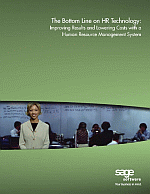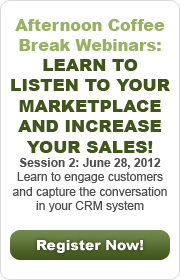When the economy slows, businesses tighten their belt and look for ways to cut costs and get more work accomplished with fewer resources. That’s why more companies today are challenging their human resource (HR) departments to make more strategic contributions to the organization. While HR is traditionally viewed as a cost center saddled with time-consuming and paper-intensive administrative tasks, it’s a necessary burden in order to comply with governmental regulations that require specialized reporting. The question is this … how can you streamline your HR processes to minimize that burden and transform HR into a model of efficiency with meaningful impact on the bottom line? For some, the answer is Sage Accpac HRMS integrated with your Sage Accpac ERP system. Let’s take a closer look.
Technology Maximizes Limited Resources
Most small and midsized businesses have limited staff to manage the many aspects of human resources. In fact, HR staff typically spends far more time performing routine administrative tasks than strategic objectives. But the simple fact is once those routine administrative tasks are automated, it has a profoundly positive impact on both the HR department and company overall. And that’s where Sage Abra HRMS comes in.
Sounds Interesting, But What Does It Do?
First things first … HRMS stands for Human Resource Management System. In the same way that Sage Accpac ERP automates your accounting and operations, Sage Accpac HRMS automates all aspects of managing your workforce including Employee Benefits, Time and Attendance, Training, Recruitment, Compensation Management, Compliance, and more. As the name suggests, it’s totally integrated with your Sage Accpac system and is available in both U.S. and Canadian versions. You get hundreds of standard reports, customizable templates, automated workflow, and a full range of features that will reduce the cost of compliance, eliminate redundant data entry and paperwork, automate repetitive processes, and have your HR Department running like a well-oiled machine.
Consolidate And Digitize
Many companies rely on a combination of paper, spreadsheets, and file cabinets to manage employee information which means that hiring data, payroll records, and benefit plan elections are probably stored in multiple places. Each employee change needs to be replicated across a variety of files … a record-keeping nightmare. But with Sage Accpac HRMS, all of your employee data is digitized and consolidated into a single database. This results in fewer errors and potential fines, elimination of duplicate data entry, and more timely reports and analysis.
Contact us to learn how Sage Accpac HRMS can have a positive impact on your bottom line.
 The Bottom Line On HR Technology
The Bottom Line On HR Technology
Improving Results and Lowering Costs with HRMS
Email Us to request a copy of this valuable guide that explains what an HR system does and what bottom-line benefit it can bring your company.





 The Bottom Line On HR Technology
The Bottom Line On HR Technology

 Download our corporate brochure for more facts about us, our
clients and our solutions.
Download our corporate brochure for more facts about us, our
clients and our solutions.
 Driving Revenue Growth 1
Driving Revenue Growth 1 Satisfying Customers 1
Satisfying Customers 1